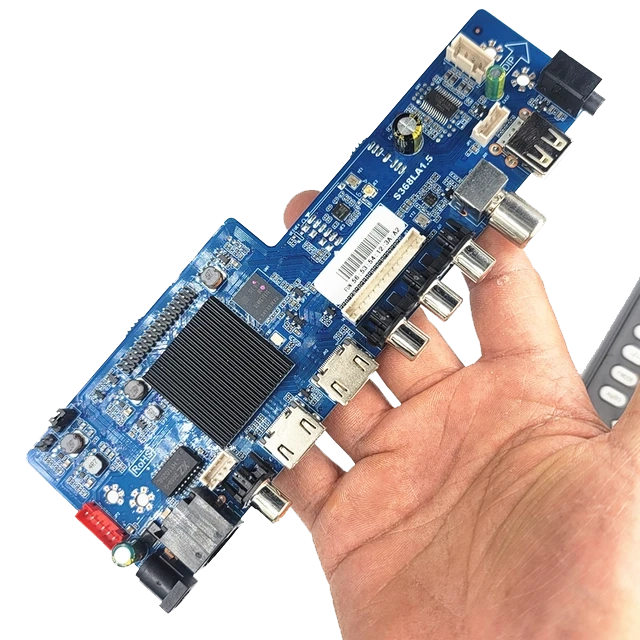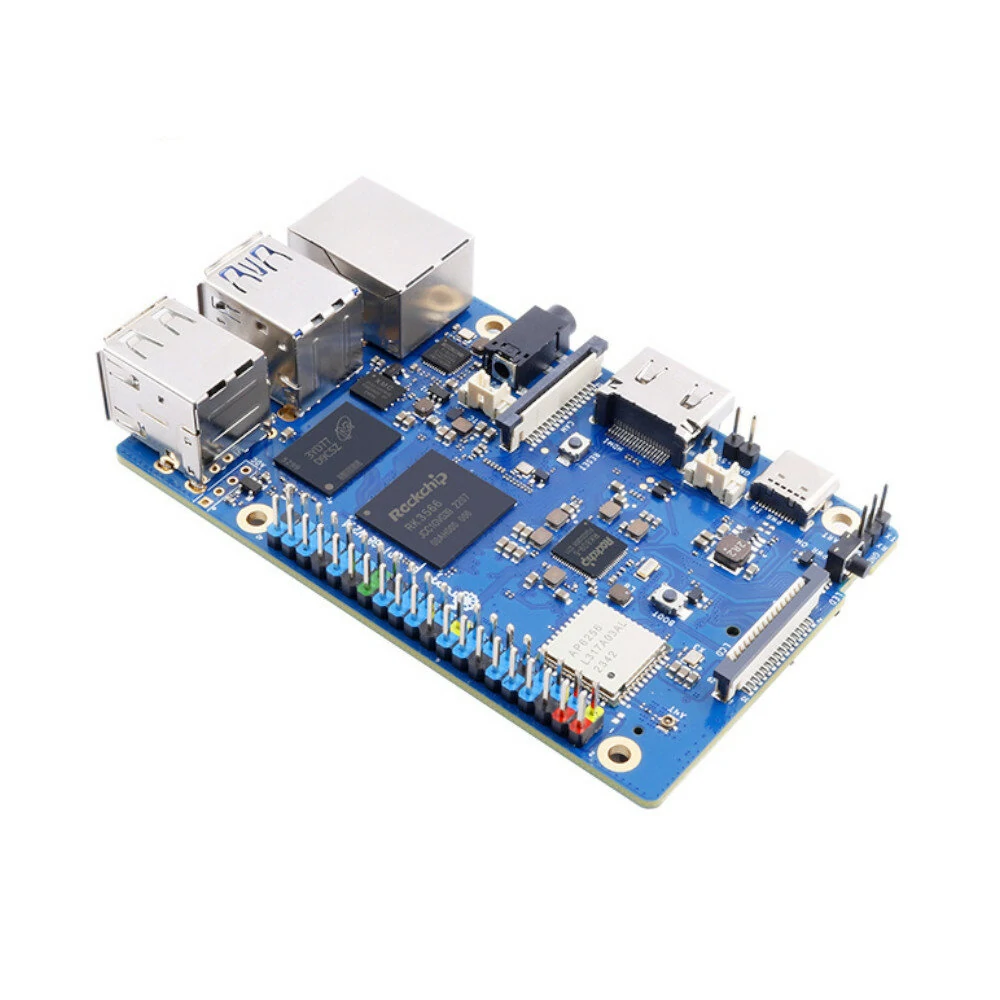
Start your adventure the sector of app creation for Android for Single Board Computers. This thorough guide will arm you with the primary ideas and actionable techniques to skillfully craft your own Android-powered SBC tasks. From knowing ground rules of Android development to delving into sophisticated world of SBC technology, this guide will support your a fruitful project development.
- Dive into the various of available SBC platforms and their differentiated resources.
- Perfect essential Android development tools, including Android Studio, SDKs, and emulators.
- Comprehend the intricacies of optimizing your SBC setup for seamless Android operation.
Inspect best practices for constructing robust and reliable Android applications tailored for SBC hardware constraints.
Creating Android Software on Single Board Computers
Utilizing potential of a Single Board Computer (SBC) for Android application engineering is an increasingly prevailing approach. These compact and versatile devices provide a cost-effective framework for testing, enabling developers to utilize the capabilities of Android without the need for a traditional desktop. By utilizing the SBC's resources such as its processor, memory, and connectivity options, developers can design Android applications that range from simple utilities to more complex packages. The capability to customize the hardware and software environment further elevates the flexibility of SBCs for Android development, making them a useful tool for both practitioners.
Harnessing Android Development Boards for IoT
For budding innovators delving into the world of Internet of Things (IoT), Android dev boards present a versatile platform to bring their pioneering ideas to life. These compact boards, often equipped with sophisticated hardware and user-friendly software development kits (SDKs), provide a strong foundation for experimenting with a wide range of IoT applications. From home control systems to technical monitoring services, Android dev boards empower companies to deploy cutting-edge IoT projects with convenience.
- Exploiting the extensive Android ecosystem, developers can engage a vast library of components specifically designed for IoT devices. This supply of resources allows for improved development and empowers the creation of refined IoT solutions.
- In addition, Android dev boards often feature onboard connectivity options such as Wi-Fi, Bluetooth, and cellular, facilitating seamless transmission with other devices and cloud platforms. This connectivity capability is necessary for enabling real-time data handling and remote administration of IoT systems.
- Finally, the shared frameworks of Android dev boards fosters a thriving ecosystem of developers, providing ample guidance for tackling any challenges encountered during the development process.
Delving into Multimedia Applications Powered by Android SBCs
The sphere of multimedia applications is constantly evolving, pushing the boundaries of what's workable. In this dynamic landscape, Android System-on-Chips (SBCs) have emerged as a potent option for developers seeking to engineer innovative and engaging experiences.
Those compact yet fully equipped SBCs provide a exclusive blend of processing capability, connectivity, and multimedia strengths that make them appropriate for a broad array of applications.
Regarding high-definition video playback to concurrent audio processing, Android SBCs are armed to handle the requests of today's multimedia setting.
- Furthermore, their open-source nature empowers developers to customize hardware and software to match specific application needs.
- The indicated level of customizability clears paths for developers to extend the limits of multimedia innovation.
Harness Android Flexibility via Development Boards
A development board including the Raspberry Pi or specific Nexus Player presents a unique opportunity to tweak your Android experience. By manipulating with the underlying framework, you can adjust everything from the user interface to selected modules. This level of mastery allows enthusiasts to test limits and develop truly tailored Android deployments. Whether you're planning to upgrade your device's performance, probe new options, or simply meet your curiosity, a dev board can offer a world of avenues.
- Absorb the fundamentals of Android development
- Assemble custom ROMs and kernels
- Analyze new apps and features
- Join your device to additional gadgets
Repairing Android on Single Board Computers
When working with Android development on Single Board Computers (SBCs), you might encounter a variety of challenges. These can range from simple configuration errors to complex software bugs. Effective debugging and troubleshooting are crucial for identifying the root cause of these problems and restoring your Android environment to full functionality. Tap into the vast resources available online, such as forums and documentation, to gain insights into common issues faced by other developers in similar setups.
Start by carefully reviewing your trace files for any error messages or warnings that might provide clues about the problem. Utilize a solid logging strategy within your Android application to capture relevant information during runtime. This can help pinpoint specific areas where errors are occurring. Don't hesitate to test different configurations and settings to see how they affect the behavior of your system.
- Spend time in understanding the hardware capabilities of your SBC, as limitations in processing power or memory can contribute to Android performance issues.
- Create a strong understanding of the Android SDK and its resources to effectively debug your applications.
- Stay updated with the latest versions of both Android and your SBC's firmware, as these often include bug fixes and performance improvements.
Refining Android Performance on SBCs
When running Android-based compact computing modules embedded boards, maximizing responsiveness is paramount. To achieve this, developers and engineers can leverage a range of strategies. This involves thoroughly optimizing software and hardware components to support seamless performance. Key areas for improvement include system resource management, power consumption, network connectivity, and application performance metrics.
- Targeting real-time task management is vital for applications that demand immediate responses.
- Applying lightweight toolkits can remarkably reduce memory consumption, thereby upgrading overall responsiveness.
Regularly improving the Android operating system and packages is essential for addressing security breaches and receiving operation upgrades.
Maintaining Security Standards on Android SBCs
Securing your Android technology against threats is paramount. Utilizing sound security best practices for your Android System-on-a-Chip (SBC) setup can significantly mitigate risks. Regularly improve your SBC's software to address exploits. Establish robust access protocols to manage user permissions and network interfaces. Conduct systematic security reviews to identify potential threats and integrate necessary solutions.
- Train your users about common security threats and best practices for protecting their devices.
- Encrypt sensitive data at rest and in transit using strong mechanisms.
By adhering to these best practices, you can create a more secure environment for your Android SBC.
Applying Advanced Methods in Android SBC Development
The world of embedded Hardware (SBCs) provides a compelling platform for developing next-generation Android applications. By integrating the power of Android with the unique capabilities of SBCs, developers can create high-performance solutions across diverse fields. This approach offers remarkable flexibility and customization options, promoting the development of bespoke applications that cater to specific requirements. Whether it's for automotive systems, SBCs coupled with Android development open up a broad range of possibilities.
- Capitalizing on the low-power nature of SBCs for resource-constrained environments.
- Assembling Android applications with live responsiveness for time-sensitive tasks.
- Blending Android's user interface capabilities with custom hardware peripherals for a smooth experience.
The combination of Android and SBCs empowers developers to push the boundaries of innovation, resulting transformative applications that reshape various fields.
Upcoming Trends: Android and SBCs
The realm of Android development is rapidly evolving, with Single Board Computers (SBCs) emerging as a prominent force. These compact and versatile appliances offer developers a powerful platform for experimentation, prototyping, and even full-scale application deployment. With their affordability, expandability, and strengthening ecosystems, SBCs are poised to refashion the way we create Android applications. Engineers are vigorously embracing this next-generation paradigm, unlocking a world of possibilities for creating compelling user experiences.
From embedded services to connected devices, SBCs provide the perfect support for a wide range of Android projects. Deploying the power of open-source software and hardware, developers can develop innovative solutions that resolve real-world challenges.
Creative Android SBC Initiatives
Android Single Board Computers (SBCs) are adaptable little units that can be used to engineer a wide range of applications. In case you're a newcomer, there are plenty of engaging project ideas to explore. One accepted category is intelligent home systems, where you can use an Android SBC to control your fixtures. You could also build a tailored media center, transmit content on a larger screen, or even develop robotics and scripting.
- Several A few android board Diverse Certain
- Various other ideas include developing educational materials, engineering wearable devices, or even helping develop open-source codes. The possibilities are truly unlimited.
